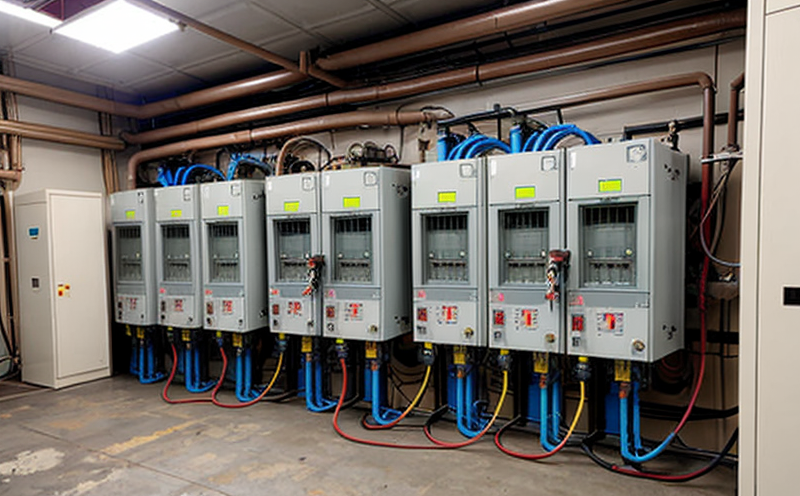Switchgear and Circuit Breaker Testing: Ensuring Electrical Safety
Switchgear and circuit breakers are critical components of modern electrical systems, responsible for distributing power efficiently and safely throughout a facility or infrastructure. However, these devices can malfunction or fail if not properly maintained or tested, leading to costly equipment damage, reduced productivity, and even safety risks to personnel. In this article, we will delve into the importance of switchgear and circuit breaker testing, highlighting the procedures, benefits, and best practices for ensuring electrical safety.
Why Switchgear and Circuit Breaker Testing is Crucial
Regular testing of switchgear and circuit breakers is essential to ensure that these devices function correctly in case of an emergency. Here are some reasons why:
Prevents Equipment Failure: Regular testing helps identify potential issues before they become major problems, reducing the likelihood of equipment failure and costly repairs.
Ensures Electrical Safety: Testing switchgear and circuit breakers ensures that they can interrupt electrical circuits quickly and safely in case of an emergency, preventing injuries or fatalities to personnel.
Complies with Regulations: Many countries have laws and regulations requiring regular testing of electrical equipment. Failure to comply can result in fines, penalties, or even shutdowns.
Reduces Downtime: Regular testing helps minimize downtime by identifying potential issues before they cause a system failure.
Types of Switchgear and Circuit Breaker Testing
There are several types of switchgear and circuit breaker testing, including:
Dry Testing: This involves simulating an electrical fault without actually energizing the equipment. Dry testing is used to check the mechanical operation of switches and circuit breakers.
Wet Testing: Also known as partial discharge testing, this method involves applying a voltage to the equipment to simulate a fault condition. Wet testing is used to detect internal insulation faults within switchgear and circuit breakers.
Detailed Guide to Dry and Wet Switchgear and Circuit Breaker Testing
Here are some detailed explanations of dry and wet testing:
Dry Testing
Purpose: To check the mechanical operation of switches and circuit breakers
Procedure:
Disconnect power supply to the equipment
Set the test switch to simulate a fault condition
Check that the switch or circuit breaker operates correctly, opening or closing as intended
Benefits: Identifies issues with mechanical operation, reducing the risk of unexpected shutdowns
Wet Testing
Purpose: To detect internal insulation faults within switchgear and circuit breakers
Procedure:
Connect a high-voltage source to the equipment
Apply a voltage to simulate a fault condition
Measure the partial discharge, which indicates any insulation faults
Benefits: Identifies potential issues with internal insulation, reducing the risk of electrical shock or fire
QA Section
Here are some answers to frequently asked questions about switchgear and circuit breaker testing:
Q: What is the recommended frequency for switchgear and circuit breaker testing?
A: The recommended frequency depends on various factors, including equipment age, usage, and regulatory requirements. Generally, its suggested to test switchgear and circuit breakers every 6-12 months.
Q: Do I need specialized equipment or training to perform switchgear and circuit breaker testing?
A: Yes, specialized equipment is required for wet testing, and personnel performing the tests should have proper training and experience in electrical safety procedures.
Q: Can switchgear and circuit breakers be tested in situ, without removing them from their installation?
A: Generally, yes. However, some types of testing may require removal of the equipment to ensure accuracy and minimize risk.
Q: What are the common issues that can be identified through switchgear and circuit breaker testing?
A: Some common issues include:
Faulty contacts: Worn or corroded contacts can cause electrical arcs and lead to equipment failure.
Internal insulation faults: Damaged or deteriorated insulation can cause partial discharges, leading to electrical shock or fire risks.
Incorrect settings: Incorrectly set parameters, such as voltage or current ratings, can compromise equipment safety and performance.
Q: Can switchgear and circuit breaker testing be automated?
A: Yes, some types of testing can be automated using specialized software and equipment. However, human intervention is still necessary to ensure accurate results and minimize risk.
Q: What are the consequences of not performing regular switchgear and circuit breaker testing?
A: Failure to perform regular testing can lead to:
Equipment failure: Undetected issues can cause costly repairs or even require replacement.
Safety risks: Faulty equipment can pose electrical shock or fire hazards to personnel.
Regulatory non-compliance: Failure to comply with regulations can result in fines, penalties, or shutdowns.
Switchgear and circuit breakers are critical components of modern electrical systems. Regular testing is essential to ensure these devices function correctly and safely. By understanding the types of testing, procedures, benefits, and best practices outlined in this article, you can help prevent equipment failure, ensure electrical safety, and comply with regulations.

































